5 Ideas for an Eco-Friendly Vanity Top Makeover
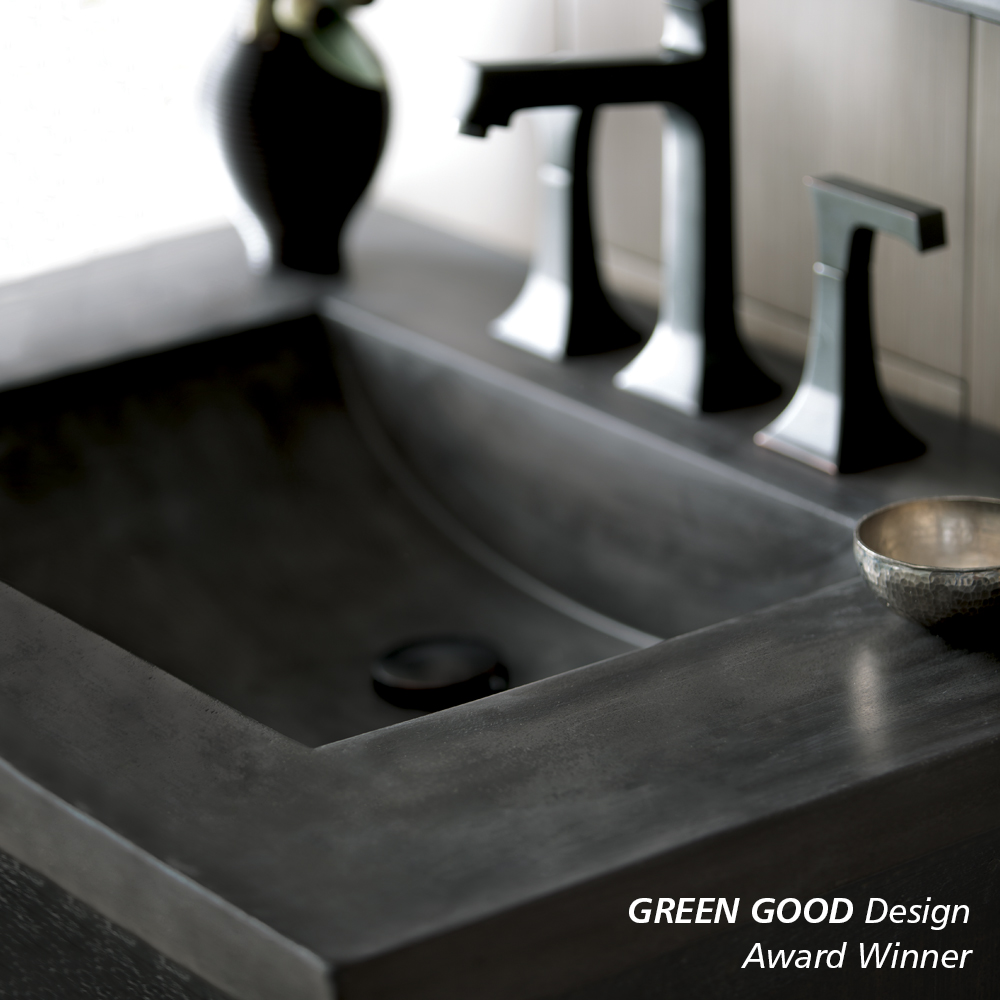
How to Choose the Best Vanity Top for Your Sustainable Bathroom
Want to up the sustainability factor of your bathroom remodel? Here are five excellent eco-friendly materials to consider for your new vanity top.
Concrete: Set Sustainability in Stone
Concrete is one of those green-friendly materials that tends to take homeowners by surprise. Is it really sustainable? As the National Ready Mixed Concrete Association puts it, “Even when it’s gray, concrete is green.”
As concrete has grown as a top choice for sustainable developers around the world, it has also found its way inside the home—onto floors, walls, sinks, countertops, vanity tops, you name it. Also making concrete an earth-friendlier choice is that its heft means it is usually made locally (as shipping costs can be heavy) or poured in place. The weight also has some manufacturers like Caesarstone making concrete-look-alike products out of quartz.
Another top choice in concrete is NativeStone®, arguably the most sustainable concrete mix for kitchens and baths. It incorporates naturally renewable jute into the recipe, which creates a vanity top that is 40 percent lighter than ordinary concrete. Meanwhile a nano sealer makes it extraordinarily stain, scratch and crack resistant. Palomar, the NativeStone vanity top/sink combo we made with NativeStone, even won a GREEN GOOD DESIGN award.
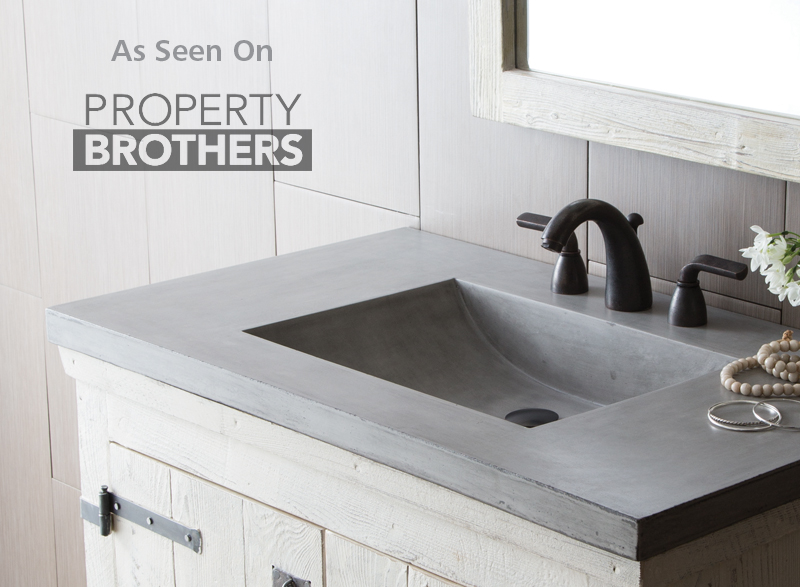
Reclaimed Wood: Welcome Soul into the Bathroom
Introducing reclaimed wood into a bathroom is the most effortless way to establish a natural vibe. Whether that be with an accent wall, shelving, a rustic mirror or vanity made of repurposed wood. As the vanity is a natural focal point for the bathroom, using this material (for the vanity itself or as the vanity top) is an excellent way to go green in the bathroom. Plus, wood countertops are usually less expensive than other options.
That said, wood vanity tops may be more susceptible to nicks and water damage over time. Your best bet is to seal it well with a polyurethane finish—important for protecting the wood surface and keeping it sanitary—but also be willing to love the character your wooden countertop will acquire over the years. And if the wood you’re using has been repurposed from old barns, fencing or wine staves (as is the case with our Vintner’s Collection vanities), then you’re likely already a big fan of the warmth and one-of-a-kind charm of reclaimed wood.
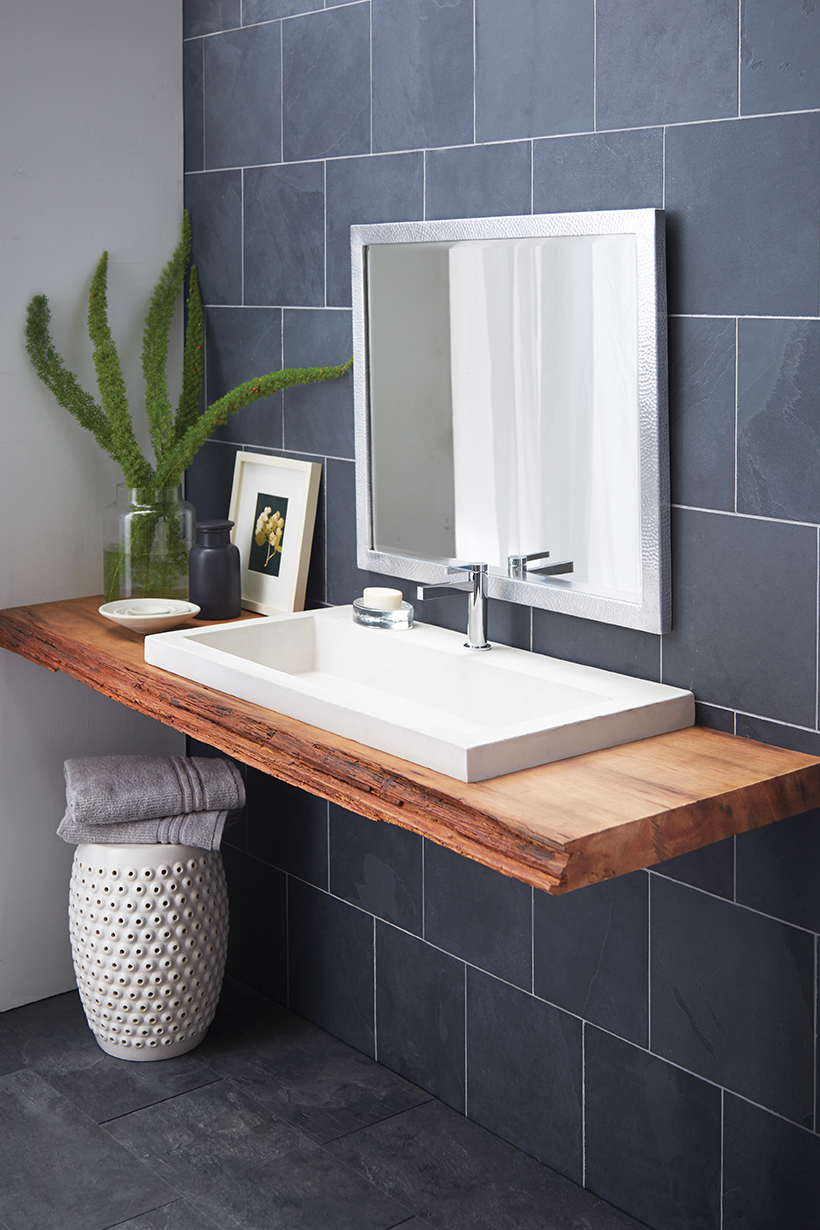
Copper: Texture-Rich and Protective, Too
Designers give hammered copper surfaces high marks for the texture and patina they contribute to a bathroom remodel. Beautiful and easy to care for, hammered copper does not show fingerprints as smooth copper might. Better yet, copper is perhaps the most perfectly perfect green material out there. It is 100-percent recyclable, so that copper pipes used hundreds of years ago can easily be melted and refashioned into your new bathroom sink or countertop today—without the copper losing even a smidge of its strength or integrity. Most quality copper vanity tops and sinks will last for a lifetime—and then some.
And studies prove that copper itself kills harmful bacteria, which is a true benefit in the bathroom.
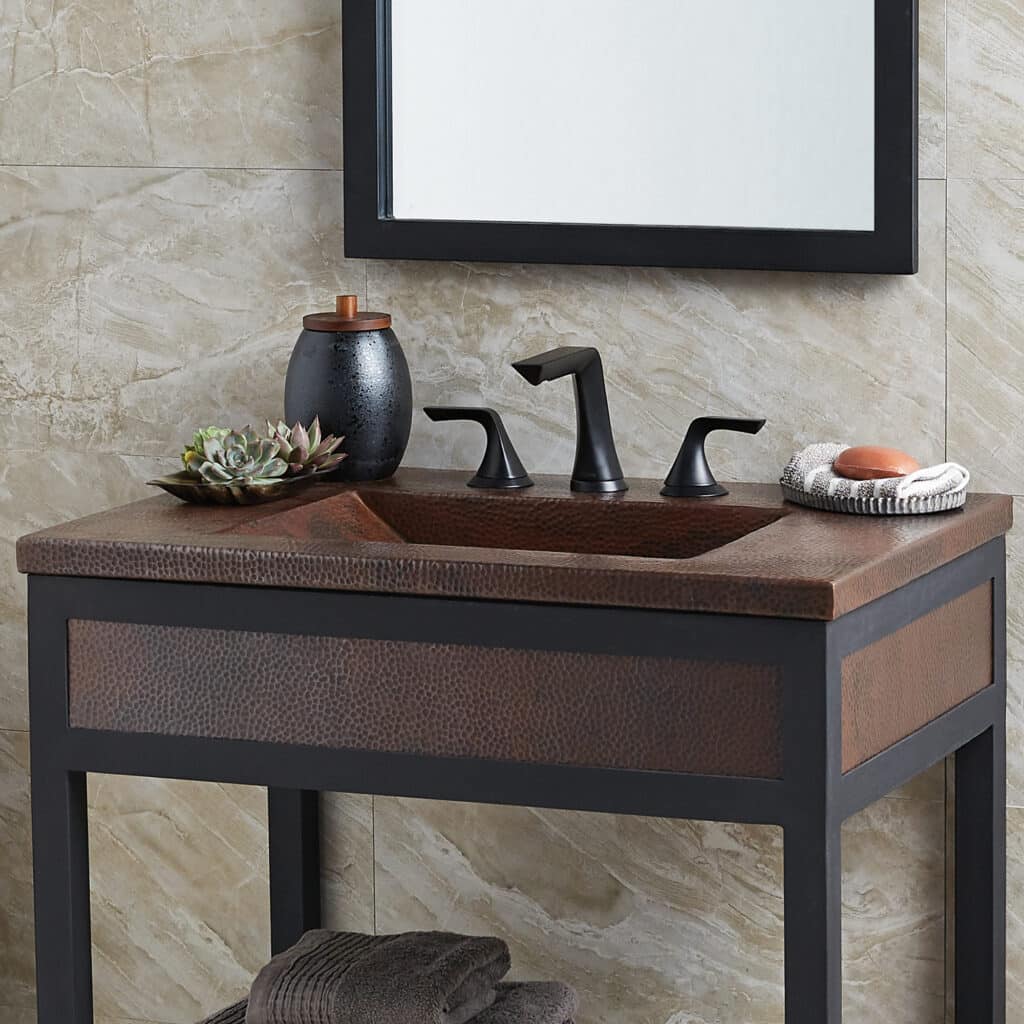
Quartz: What’s All the Hoopla?
To get the look of a real stone surface without the high-maintenance pitfalls, quartz is a top pick to top your vanity. Though it’s been on the market for decades, naturally abundant quartz has gotten its big bump in popularity thanks to declining prices — making it only a little more expensive than granite but still less expensive than marble — and the increasing variety in colors and collections available.
So what’s all the fuss about? How about no sealing, ever? That’s right! Most quartz tops are engineered of about 93 percent crushed quartz and 7 percent polymer resin and pigments; together, these ingredients form a virtually impermeable surface. (Though these countertops are stain resistant, watch out for direct sunlight, which can cause fading over time.) And while quartz tops are even heavier than granite tops, they’re also more flexible, making them generally easier to install.
Available in many colors and patterns, quartz vanity tops are glossier than most natural countertops, which may or may not suit your aesthetic.
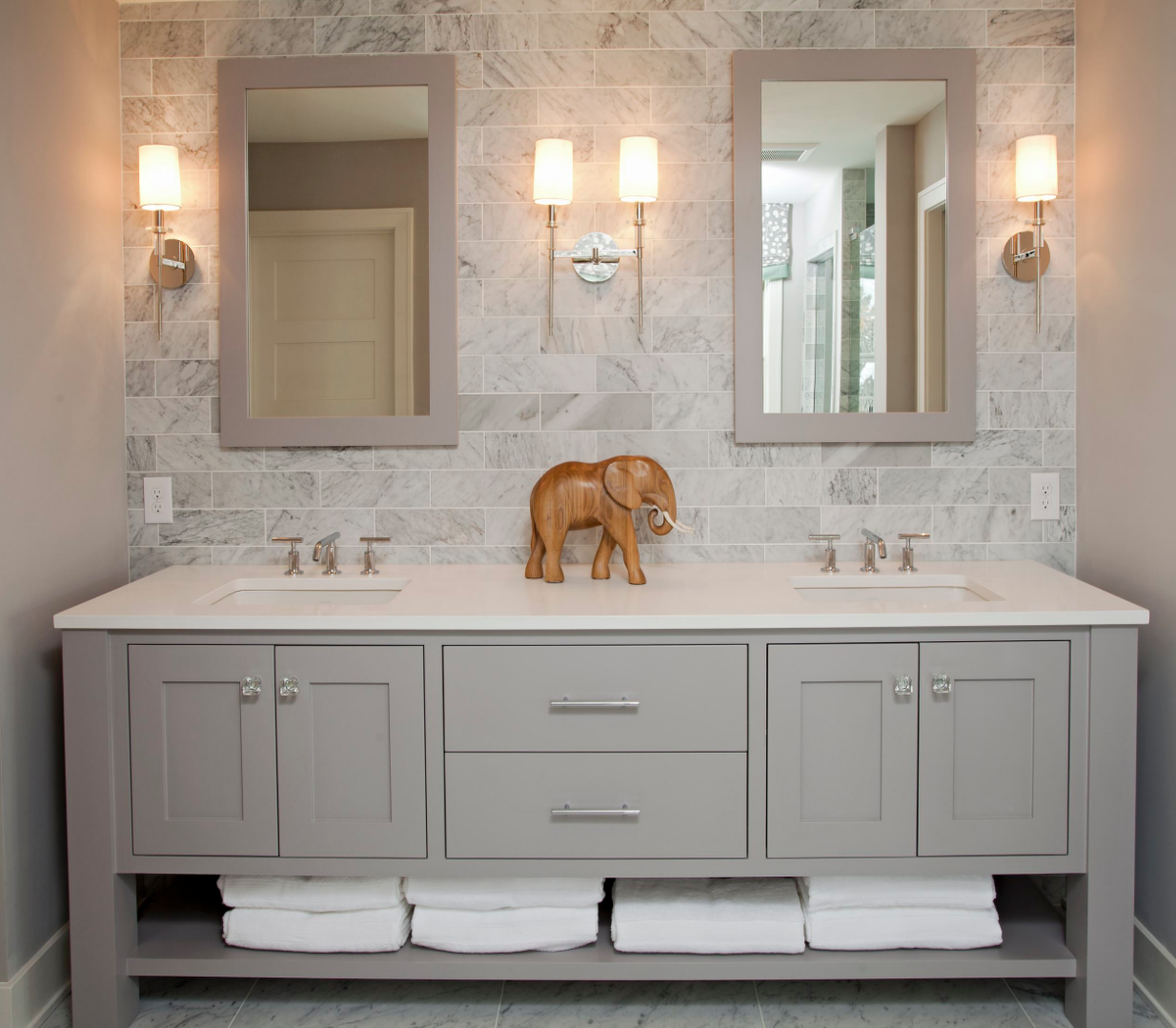
Recycled Glass: Add Shine to Your Bath
If you’re a fan of the look of beach glass and of coastal-inspired and contemporary home designs, you will want to take a look at recycled glass vanity tops, which are embedded with chips of sparkling glass. These countertops come in a spectrum of colors, including shades of brown and black. A form of terrazzo, they are made with combinations of things like marble chips and concrete and then poured into place and smoothed into shape with grinders and polishers.
Considered more environmentally friendly than granite, recycled glass is also less expensive than granite, and can be expected to last a good 50 years. These countertops are non-porous and highly stain resistant, though they do show fingerprints more easily than traditional stone tops. Experts recommend sealing these countertops twice a year.
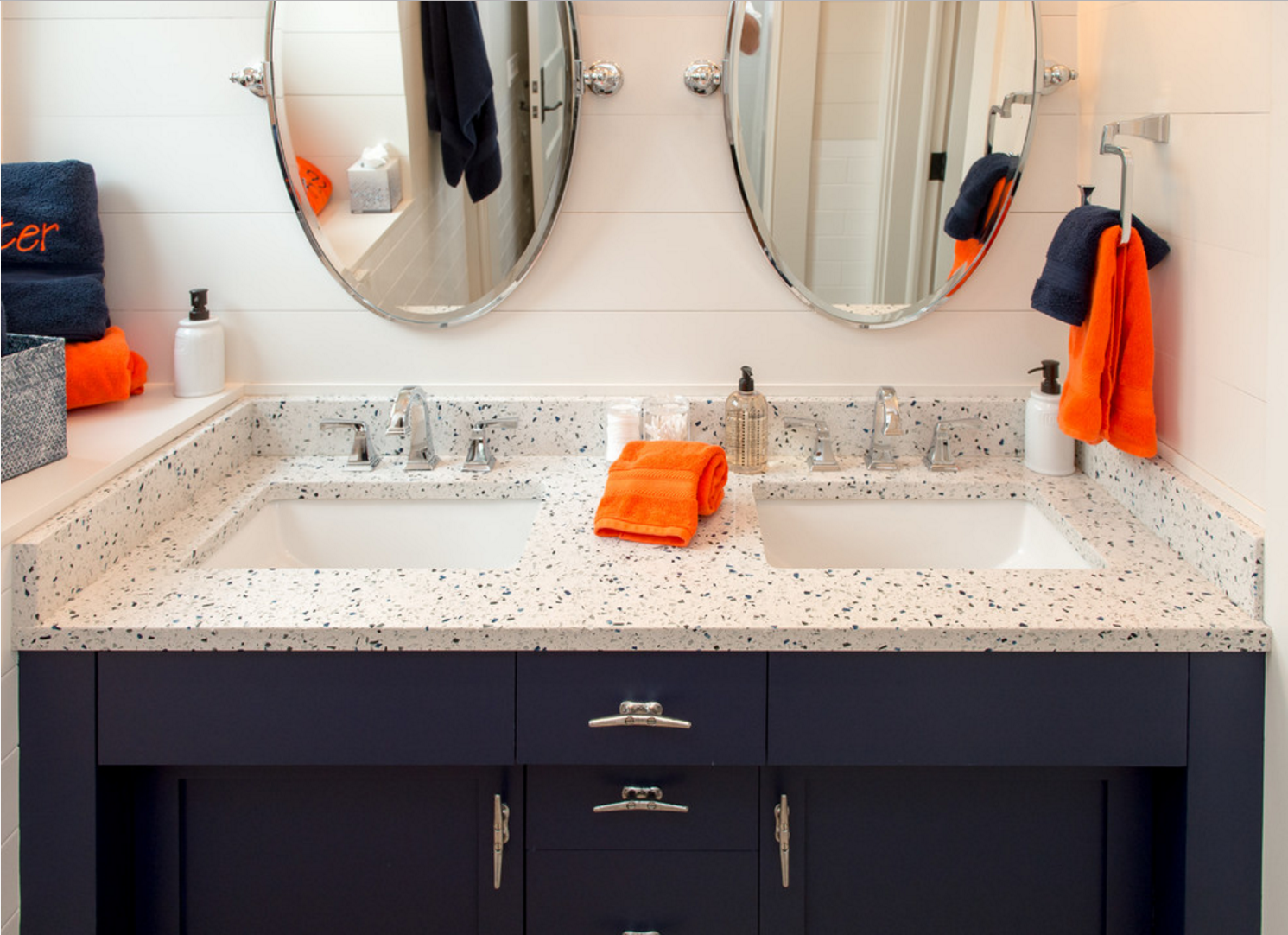
Want more kitchen and bath design tips? Sign up to receive our newsletter!
